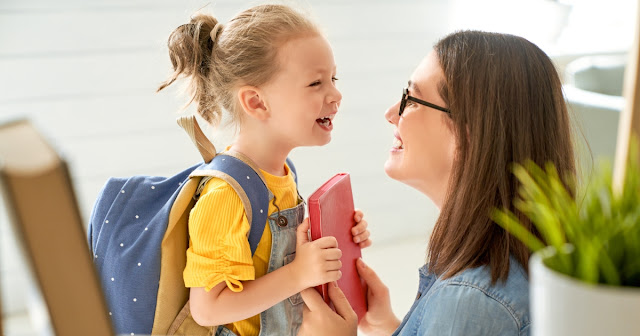How Teaching Techniques for Parents Help to Handle Emotions and Tantrums?
Parent often gets confused when their kids go through complex feelings. So, a unique teaching technique for parents helps to stay calm, guide them, and talk clearly during tough moments. Therefore, such simple techniques allow the development of trust and make it easier to handle a child’s tantrums. So, when parents use such kind of techniques, they get the confidence to make their children feel safe. It further turns stress into proper bonding time between parents and children.
Understanding Kids' Teaching Technique for Parents
Understanding kids’ teaching techniques for parents makes lessons more fun and easier. Every child learns differently. Few kids learn by what they see. On the other hand, other children learn by what they hear or by doing things practically. Thus, parents get to learn about children’s learning process, and they can help them understand new things easily with less stress.
- Visual Learning: In case of visual learning, children memories colors, pictures, and writing words. They often like flashcards, charts, and drawings. So, use picture books to show them what works rather than just talking about it. Thus, use books with colorful notes or pictures to help them learn and focus.
- Auditory Learning: The auditory learning process happens by listening to different things. They generally listen to songs, stories, and spoken instructions. Therefore, the kids with good listening skills remember what their parents say rather than what they write.
- Kinesthetic Learning: The kinesthetic learning process involves moving the body to develop a proper understanding of different things. They also enjoy hands-on tasks such as dancing, building, or role-playing. Therefore, due to this kind of learning, kids don’t sit too long, but they remember things when they do or touch something.
Developing a Positive Learning Environment at Home
Creating and maintaining a positive learning environment helps the kids feel happy, safe, and ready to learn new things. So, when they start to enjoy the learning process, they take more interest and work harder. Thus, parents don’t need fancy tools or any big space. Just a few simple things lead to something bigger and different.
- Select a Quiet Learning Place: Choose a place in the home where the kid can carry out their learning process without any disturbance or noise. Such a place can include a desk, a corner of a room, or even the kitchen table. Thus, keep these places organized and clean.
- Keep Every Learning Tool Near: Make sure the children have access to paper, pencil, books, and anything that completes the learning process. Therefore, helping them stay focused and save more time.
- Craft a Simple Daily Routine: Children generally learn better when they complete tasks according to a schedule. Thus, set a right time for play, schoolwork, meals, and sleep. So, when they know what comes next, they feel ready and calm.
How Regular Routine Help Children in Early Education?
A routine generally provides a clear picture of daily activities. So, children stay safe and feel calm as they know what’s coming next. Thus, in their early education, a schedule makes the learning process much smoother and easier. It further results in the development of positive habits that last for years.
- The Need of Routine: Kids often feel confident and strong when they learns about their routine. It fades away stress due to the shock of a new schedule. Thus, when they know what comes next, they feel happy and ready to learn more.
- Better Behavior & Focus: Children generally behave good and pay more attention when they follow the right routine. So, they choose to waste no time stressing about the upcoming changes. Therefore, helping them learn quickly with very less distractions.
- Easy Transitions: A proper routine makes switching from one task to another easy. So, children accept those changes when they know about them. For example, doing homework right after their playtime starts to feel natural if these activities happen every day at the same time.
How to Use Play as a Teaching Aid?
Play helps a child learn better and faster. It makes the process fun, as they get to learn new things without any stress. Children often pay more attention when they start to enjoy the activities. Thus, using play as a teaching aid works well for every child.
- Play Makes Things Enjoyable: Children enjoy playing different games. So, when parents add games to the schedule, the learning process becomes easier. Due to this process, they stay more active and curious. For example, a child learns maths by counting blocks or remembering colors by sorting toys. Therefore, leading to a sharp mind along with an active body.
- Play Building Language Skills: Talking while playing games helps children learn innovative words. Storytelling, role-play, as well as puppet games encourage children to use new words and speak more comfortably. Therefore, these things allow them to listen better and respond to them accordingly.
- Play Develops Social Skills: Children learn how to take turns, share, and follow rules while playing group games. Therefore, such social lessons allow the children to make friends at school as well as in life.
Conclusion
Kids' teaching techniques for parents help to make the learning process calmer, smoother, and more fun. With the right routine, play, and proper understanding, parents can provide the right guidance to their children. Therefore, children successfully develop confidence. So, these powerful yet simple techniques develop a strong connection, create a loving environment, and improve learning where children feel safe, excited, and heard.




Comments
Post a Comment